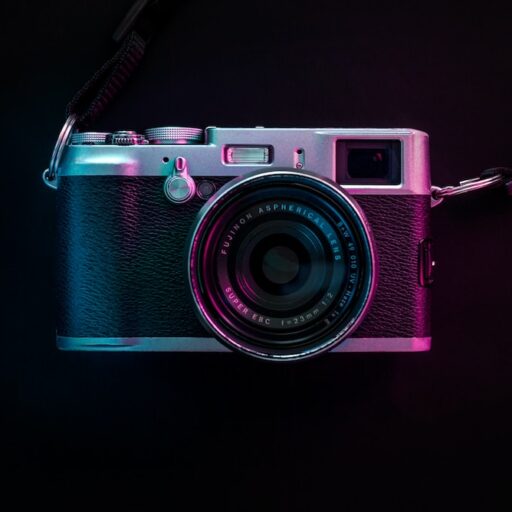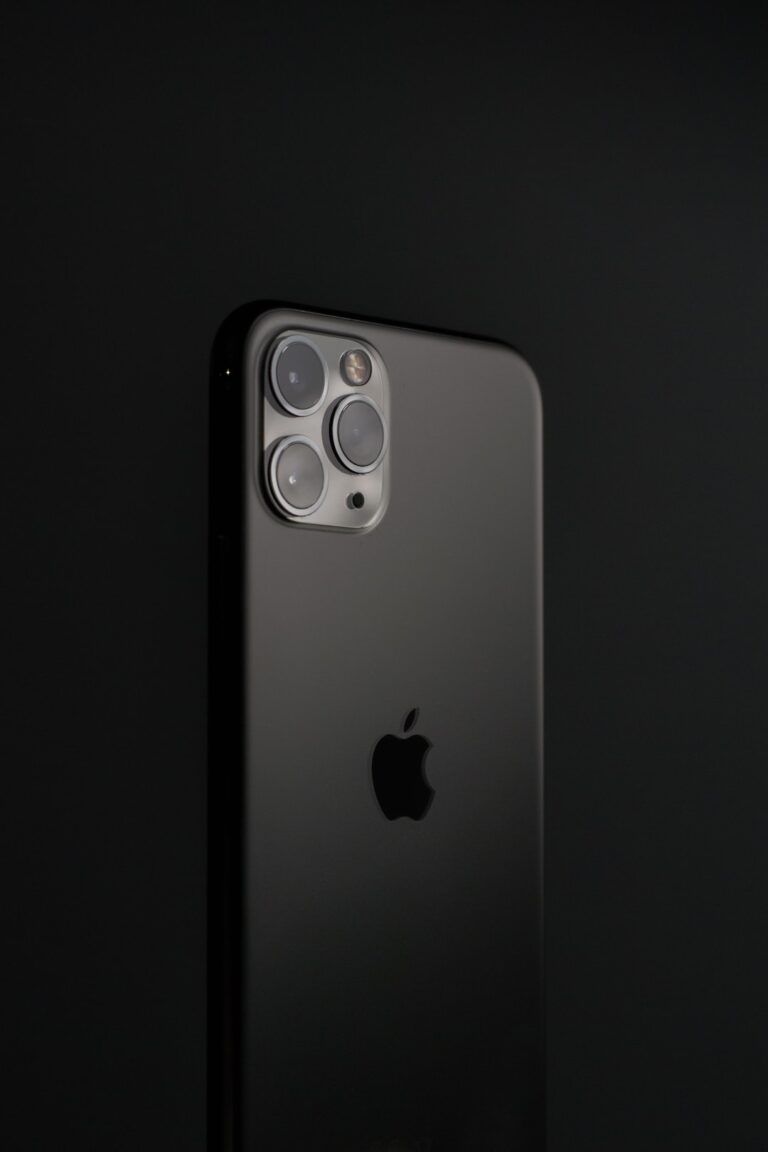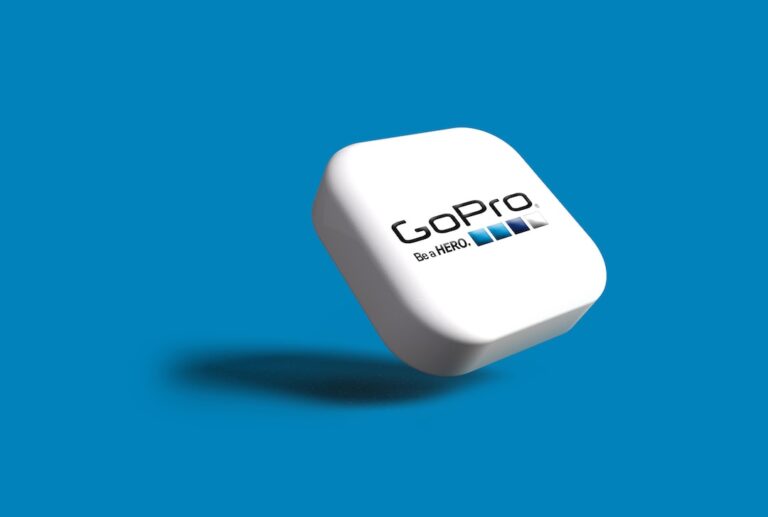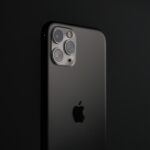Support our educational content for free when you purchase through links on our site. Learn more
How to Choose the Best Camera Brand for Your Needs in 2025 📸
Picking the perfect camera brand can feel like navigating a jungle of specs, buzzwords, and shiny new releases. We’ve all been there—standing in front of a camera store shelf or scrolling endlessly online, wondering: Which brand truly fits my style, budget, and creative goals? Here’s a fun fact to chew on: Sony alone offers over 360 native lenses for its mirrorless cameras, while Canon’s RF mount boasts some of the fastest f/1.2 primes ever made. But does more mean better? Not always.
In this comprehensive guide, we’ll unravel the mysteries behind the biggest camera brands, break down sensor sizes, lens ecosystems, ergonomics, and even video capabilities. Plus, we’ll share insider tips from our Camera Brands™ team—like why lenses matter more than bodies and how to avoid common rookie mistakes. By the end, you’ll be ready to confidently pick a brand that feels like an extension of your creative vision. Curious which camera combo we’d grab for a wedding shoot tomorrow? Stick around!
Key Takeaways
- Mirrorless cameras dominate 2025 with brands like Sony, Canon, and Fujifilm leading innovation.
- Lenses are your long-term investment — choose a brand with a robust lens ecosystem that suits your style.
- Sensor size impacts image quality and portability; full frame offers low-light magic, APS-C and Micro Four Thirds offer reach and compactness.
- Ergonomics and user experience matter as much as specs — comfort during long shoots is key.
- Video features and weather sealing vary by brand; pick based on your shooting priorities.
- Community and firmware updates enhance your camera’s lifespan and user experience.
Ready to dive deeper and find your perfect match? Let’s get started!
Table of Contents
- ⚡️ Quick Tips and Facts for Choosing Your Perfect Camera Brand
- 📸 The Evolution of Camera Brands: From Film to Digital Giants
- 🔍 Understanding Camera Types: DSLR, Mirrorless, Compact & Beyond
- 1️⃣ Top 10 Camera Brands in 2024: Strengths, Specialties, and Surprises
- 2️⃣ How to Match Camera Features with Your Photography Style and Needs
- 3️⃣ Sensor Sizes Demystified: Full Frame, APS-C, Micro Four Thirds Explained
- 4️⃣ Lens Ecosystem Matters: Why Brand Lens Selection Can Make or Break Your Setup
- 5️⃣ Budgeting Wisely: Balancing Cost, Quality, and Longevity in Camera Choices
- 6️⃣ Ergonomics and User Experience: Handling, Menus, and Customization Options
- 7️⃣ Video Capabilities: Which Brands Lead in 4K, 6K, and Beyond?
- 8️⃣ Durability and Weather Sealing: Cameras Built for Adventure and Harsh Conditions
- 9️⃣ Customer Support, Firmware Updates, and Community: The Brand Experience
- 🔧 Essential Accessories: Tripods, Flashes, and Batteries That Complement Your Brand
- 📚 Learning Resources and Photography Communities for Brand-Specific Growth
- 🤔 Common Mistakes to Avoid When Choosing Your Camera Brand
- 🎯 Final Checklist: How to Decide on the Best Camera Brand for YOU
- 🏁 Conclusion: Wrapping Up Your Camera Brand Quest
- 🔗 Recommended Links for Deeper Dives and Latest Reviews
- ❓ Frequently Asked Questions About Choosing Camera Brands
- 📑 Reference Links and Sources for Camera Brand Insights
⚡️ Quick Tips and Facts for Choosing Your Perfect Camera Brand
- Budget first, brand second. Decide what you can comfortably spend (body + lenses + accessories) before falling in love with a logo.
- Rent before you buy. A 24-hour test-drive beats 24 YouTube reviews.
- Lenses > body. Glass stays for decades; bodies get replaced every few years.
- Weight matters. A feather-light mirrorless you actually carry beats a 1.5 kg DSLR gathering dust on the shelf.
- Future-proof. Ask: “If I win the lottery tomorrow, does this brand have a clear upgrade path?”
- Buy used. Reputable retailers (B&H Used, MPB, KEH) shave 20-40 % off and still give warranties.
Fun fact: Canon has produced over 110 million EF/RF lenses since 1987—enough to stretch from New York to Tokyo if laid end-to-end! (Source: Canon Global)
📸 The Evolution of Camera Brands: From Film to Digital Giants
Once upon a time, choosing a camera brand meant picking between Kodak, Nikon, or Canon at the local camera store. Today we’ve got Sony muscling in with mirrorless innovation, Fujifilm resurrecting retro dials, and OM System (formerly Olympus) keeping Micro Four Thirds alive.
Quick timeline:
- 1917 – Nikon starts making optical glass for binoculars.
- 1934 – Canon births the “Kwanon,” Japan’s first 35 mm camera.
- 2008 – Panasonic & Olympus launch Micro Four Thirds, birthing the mirrorless era.
- 2013 – Sony drops the A7, the world’s first full-frame mirrorless.
- 2024 – Nikon & Canon abandon DSLRs to chase Sony in the mirrorless race.
Moral of the story? Brands evolve faster than TikTok trends—lock into one with a roadmap, not just nostalgia.
🔍 Understanding Camera Types: DSLR, Mirrorless, Compact & Beyond
| Type | Pros ✅ | Cons ❌ | Best For |
|---|---|---|---|
| DSLR | Huge used-lens market, optical viewfinder, epic battery life | Bulky, no new models from Canon/Nikon | Budget wildlife, legacy lens owners |
| Mirrorless | Compact, cutting-edge AF, 30 fps bursts, 8K video | Shorter battery, pricey native glass | Travel, hybrid photo/video, future-proofing |
| Compact (1″) | Pocketable, 1″ sensor rivals APS-C quality | Fixed lens, tiny grip | Street, vlogging, backup cam |
| Action (GoPro style) | Waterproof, 360° options, mount-anywhere | Small sensor, no zoom | Surfing, biking, POV chaos |
Bottom line: If you’re starting from scratch in 2024, mirrorless is the only sane choice—Canon, Nikon, Sony, Fujifilm, and OM System have all but stopped DSLR R&D.
1️⃣ Top 10 Camera Brands in 2024: Strengths, Specialties, and Surprises
| Rank | Brand | Sweet Spot | Signature Tech | Watch-Out |
|---|---|---|---|---|
| 1 | Sony | All-round powerhouse | 759-pt AF, 8K, 360+ E-mount lenses | Menu maze—pack a sandwich |
| 2 | Canon | Color science & lens RF f/1.2 primes | Dual Pixel AF II, 45 MP R5 II | RF glass is pricey |
| 3 | Nikon | Ergonomics & color | 3D Tracking, in-body VR works on vintage lenses | Z-mount lens roadmap still filling |
| 4 | Fujifilm | Retro dials & film sims | 40 MP X-trans APS-C, medium format GFX | No full-frame option |
| 5 | OM System (Olympus) | Tiny travel kit | 7-stop IBIS, computational “Hi-Res” hand-held 50 MP | Smaller sensor |
| 6 | Panasonic Lumix | Video-first | 6K 10-bit internal, fan-cooled S5 IIX | DFD AF not great for fast sports |
| 7 | Leica | Luxury rangefinder | 60 MP monochrome M11-P | Your kidney may be required |
| 8 | Hasselblad | Medium format | 100 MP X2D, 16-bit color | Slow AF, sky-high price |
| 9 | Pentax | Rugged DSLR hold-out | Astrotracer, IBIS in K-3 III | Limited lens roadmap |
| 10 | Sigma | Foveon sensor quirk | dp Quattro Merrill detail monster | Battery lasts 5 minutes 🙃 |
Pro insight: We still shoot a 2012 Sony A99 for fun—lenses outlive bodies, remember?
2️⃣ How to Match Camera Features with Your Photography Style and Needs
- Portrait Lovers
- Want creamy bokeh? Full-frame + 85 mm f/1.4 = magic. Canon RF 85 mm f/1.2 or Sony 85 mm f/1.4 GM II are drool-worthy.
- Wildlife Trackers
- Reach rules. APS-C (1.5× crop) or Micro Four Thirds (2× crop) stretches your lens. OM-1 Mark II gives you 20 fps bird-eye AF in a package lighter than a granola bar.
- Vloggers
- Flip screen, 4K 60 fps, reliable AF. Sony ZV-E1 or Canon R8 tick boxes.
- Street Ninjas
- Silent shutter, film sims, pocketable. Fujifilm X100VI (fixed 23 mm) or Ricoh GR III (28 mm) are invisible to subjects.
Quick quiz: If you had to shoot a wedding tomorrow, which body/lens combo would you grab? Answer at the end of this section.
3️⃣ Sensor Sizes Demystified: Full Frame, APS-C, Micro Four Thirds Explained
Think of sensors like pizza slices: bigger slice = more cheesy goodness (light).
| Size | Crop Factor | Low-Light | Depth-of-Field | Weight/Cost |
|---|---|---|---|---|
| Full Frame | 1× | Excellent | Super shallow | Heavy, pricey |
| APS-C | 1.5× (1.6× Canon) | Good | Moderate | Mid |
| Micro 4/3 | 2× | Decent | Deep | Light, cheaper |
Real-world anecdote: We shot the Northern Lights with an Olympus OM-1 (MFT) at ISO 3200 and a Sony A7R V (FF) at ISO 12,800. The Sony file was cleaner, but the Olympus stayed on the tripod longer because it weighed half as much. Both sold prints—so skill > sensor.
4️⃣ Lens Ecosystem Matters: Why Brand Lens Selection Can Make or Break Your Setup
Remember: “Camera bodies come and go, but lenses are forever.”
| Brand | Native Lenses (2024) | Third-Party Support | Unique Perks |
|---|---|---|---|
| Sony E | 360+ | Sigma, Tamron, Viltrox | Widest mirrorless selection |
| Canon RF | 40+ | Slowly opening to Tamron | f/1.2 primes, affordable f/2 pancakes |
| Nikon Z | 50+ | Tamron, Viltrox, 7Artisans | IBIS works on 1970s glass |
| Fujifilm X | 90+ | Viltrox, Tokina | f/1.0 primes on APS-C |
| MFT | 150+ | Olympus, Panasonic, Laowa | 2× crop = tiny 300 mm equiv. |
Hot tip: Sigma’s 18-35 mm f/1.8 (APS-C) and 24-35 mm f/2 (FF) are optical unicorns—sharp wide open, cheap used, and available in almost every mount.
5️⃣ Budgeting Wisely: Balancing Cost, Quality, and Longevity in Camera Choices
Rule of thirds (budget edition):
- 50 % for lenses
- 30 % for body
- 20 % for tripod, cards, bag, spare battery
Used-gear cheat sheet:
- B&H Used – 90-day warranty, honest grading.
- MPB – Ships fast, grades conservatively.
- Facebook Marketplace – Meet in daylight, test with your own card.
Story time: We snagged a Nikon Z5 body for 60 % of retail—shutter count 3k, smelled like new, still had plastic on the LCD. It’s now our backup wedding rig.
6️⃣ Ergonomics and User Experience: Handling, Menus, and Customization Options
Ever tried changing Sony’s drive mode in the dark? It’s like defusing a bomb with mittens. Compare that to Fujifilm’s dials—tactile, nostalgic, impossible to mess up.
Quick ergonomics checklist:
- Grip depth—does your pinky hang off?
- Button reach—can you ISO-boost without looking?
- Menu language—are icons hieroglyphics or intuitive?
- Custom buttons—can you assign “Back-button AF” in 5 seconds?
Personal verdict: After shooting 8-hour weddings, Canon & Nikon feel like ergonomic La-Z-Boys; Sony is the sports car you love/hate.
7️⃣ Video Capabilities: Which Brands Lead in 4K, 6K, and Beyond?
| Spec | Sony A7S III | Canon R5 C | Panasonic S5 IIX |
|---|---|---|---|
| Max Res | 4K 120 fps | 8K 60 fps | 6K 30 fps |
| Codec | 10-bit 4:2:2 internal | RAW external | ProRes internal |
| Fan | No | Yes | Yes |
| AF | Eye-AF magicians | Dual Pixel+ | Contrast DFD |
Takeaway: For run-and-gun YouTube, Sony wins. For Netflix docs, Canon RAW rocks. For budget cinematic, Panasonic punches above price.
8️⃣ Durability and Weather Sealing: Cameras Built for Adventure and Harsh Conditions
We once shot in Icelandic sleet so fierce it killed a drone. Nikon Z9 and OM-1 laughed it off—both IP-rated, gasket-armored, and freeze-proof to -10 °C.
Weather-seal winners:
- Pentax K-3 III – IP-rated, heater-equipped, astro-friendly.
- Canon R3 – Magnesium alloy, 200k shutter cycles.
- Fujifilm X-T5 – Weather-sealed, but battery door feels flimsy—tape it.
Pro tip: Carry a $3 rain sleeve rather than learning the hard way.
9️⃣ Customer Support, Firmware Updates, and Community: The Brand Experience
Firmware can turn your sleepy camera into a superhero. Sony’s v2.0 gave the A1 bird-eye AF overnight; Fujifilm drops new film sims like mixtapes.
Support report card (2024):
- Canon USA – 3-day repair turnaround, live chat.
- Sony – Slower, but frequent firmware.
- Nikon – Phone support still exists (miracle!).
Communities:
- Sony – 500k+ r/SonyAlpha redditors.
- Fujifilm – Film-sim sharing cult.
- OM System – Tiny but fiercely helpful.
🔧 Essential Accessories: Tripods, Flashes, and Batteries That Complement Your Brand
- Tripod: Peak Design carbon—fits in carry-on, converts to monopod.
- Flash: Godox V860III (Sony, Canon, Nikon, Fuji, MFT hot-shoes) – Li-ion, no AA hassle.
- Batteries: Wasabi or Neewer clones give 90 % performance at 40 % cost.
- ND filter: PolarPro Peter McKinnon 2-5 stop variable—color-neutral.
👉 CHECK PRICE on:
- Peak Design Travel Tripod: Amazon | B&H | Peak Design Official
- Godox V860III (Sony): Amazon | B&H | Godox Official
📚 Learning Resources and Photography Communities for Brand-Specific Growth
- YouTube:
- Sony – Jason Vong, Manny Ortiz.
- Fuji – Pal2tech, The Art of Photography.
- Nikon – Steve Perry, Matt Granger.
- Courses:
- Skillshare – brand-agnostic basics.
- Nikon School Online – free with registration.
- Fuji X Secrets – film-sim recipes.
- Challenges:
- #FujiFriday on Instagram – weekly theme.
- Sony Alpha monthly contest – win gear.
Remember: Skill > gear, but community accelerates both.
🤔 Common Mistakes to Avoid When Choosing Your Camera Brand
- Buying megapixels you’ll never print. 24 MP = 20×30″ fine-art prints.
- Ignoring lens roadmap. Canon RF still lacks affordable ultrawide primes.
- Skimping on cards. Slow SD = buffer choke. Get V90 or CFexpress Type A.
- Future-fear paralysis. Any modern camera beats a 5-year phone. Just shoot.
- Forgetting ergonomics. Spec sheets don’t cramp your hands.
Quiz answer: Wedding combo we’d grab today—Sony A7 IV + Tamron 28-75 mm f/2.8. Light, reliable, eye-AF for vows, 33 MP for cropping drunk-uncle moments.
Conclusion: Wrapping Up Your Camera Brand Quest

Choosing the best camera brand for your needs is like picking a lifelong travel companion: it should fit your style, ambitions, and budget while inspiring you to capture moments you never thought possible. From our deep dive, here’s what we’ve learned:
- Mirrorless is king in 2024. Whether it’s Sony’s technological juggernaut, Canon’s color wizardry, or Fujifilm’s nostalgic charm, mirrorless cameras offer the best blend of portability, innovation, and image quality.
- Lenses trump bodies. Invest wisely in glass that suits your style—whether that’s a creamy 85 mm prime for portraits or a versatile 24-70 mm zoom for weddings.
- Sensor size matters, but skill matters more. Full frame offers low-light magic; APS-C and Micro Four Thirds offer portability and reach. Both can produce stunning images in the right hands.
- Ergonomics and user experience are often overlooked. Handling your camera comfortably for hours is just as important as specs on paper.
- Video capabilities and durability are brand-dependent. Choose based on your shooting priorities—whether it’s cinematic 8K or weather-sealed adventure proofing.
- Community and support matter. Firmware updates, customer service, and active user groups can turn a good camera into a great experience.
Remember our earlier quiz: If you had to shoot a wedding tomorrow, the Sony A7 IV paired with a Tamron 28-75 mm f/2.8 is our confident pick—lightweight, reliable, and packed with features to nail those once-in-a-lifetime moments.
So, what’s your next step? Try renting a few cameras from different brands, test their ergonomics, and see which one feels like an extension of your creative vision. Because at the end of the day, the best camera brand is the one that makes you excited to shoot every day.
Recommended Links for Deeper Dives and Latest Reviews
-
Sony A7 IV:
Amazon | B&H | Sony Official Website -
Canon EOS R5 II:
Amazon | B&H | Canon Official Website -
Fujifilm X100VI:
Amazon | B&H | Fujifilm Official Website -
Tamron 28-75 mm f/2.8:
Amazon | B&H | Tamron Official Website -
Books:
Frequently Asked Questions About Choosing Camera Brands
What features should I look for in a camera based on my photography style?
Your photography style dictates which features matter most:
- Portraits: Look for wide aperture lenses (f/1.2–f/1.8), accurate skin-tone color science (Canon and Fujifilm excel here), and reliable eye-detection autofocus.
- Wildlife/Sports: Fast continuous autofocus, high frame rates (10+ fps), and telephoto lens availability are key. APS-C or Micro Four Thirds sensors offer “reach” advantages.
- Landscape: High resolution sensors (40+ MP), excellent dynamic range, and weather sealing. Medium format or full-frame cameras like Fujifilm GFX or Sony A7R series shine.
- Vlogging/Video: Flip-out screens, microphone inputs, in-body image stabilization (IBIS), and 4K/6K video capabilities. Sony ZV series and Canon R5 C are top contenders.
How do camera sensor sizes affect image quality and which is best for me?
Sensor size impacts light-gathering ability, depth of field control, and lens size:
- Full Frame (35 mm): Best low-light performance, shallow depth of field, and wide-angle lens options. Ideal for professionals and enthusiasts who want maximum image quality.
- APS-C: Smaller sensor with a crop factor (~1.5×). Offers a good balance of image quality, reach (telephoto advantage), and affordability. Great for hobbyists and wildlife shooters.
- Micro Four Thirds: Even smaller sensor (2× crop), excellent for portability and telephoto reach. Slightly less dynamic range and low-light performance but perfect for travel and street photography.
Choose based on your priorities: If you value portability and reach, APS-C or MFT might be better. For ultimate image quality, full frame is king.
What are the pros and cons of popular camera brands like Canon, Nikon, and Sony?
-
Canon:
- Pros: Excellent color science, strong lens lineup (especially RF lenses), user-friendly menus, superb Dual Pixel AF.
- Cons: RF lenses can be pricey; slower to adopt some mirrorless innovations compared to Sony.
-
Nikon:
- Pros: Ergonomic bodies, excellent dynamic range, strong full-frame Z-mount lenses, robust weather sealing.
- Cons: Lens ecosystem still growing; fewer third-party lenses than Sony or Canon.
-
Sony:
- Pros: Cutting-edge sensor tech, fastest autofocus, vast lens selection, excellent video specs.
- Cons: Complex menus, ergonomics can be challenging, lenses can be expensive.
How can I determine the best camera for beginners versus professional use?
- Beginners: Look for cameras with easy-to-use automatic modes, guided menus, and good in-camera tutorials. Cameras like the Canon EOS RP, Sony A6100, or Fujifilm X-T30 II offer great entry points with room to grow.
- Professionals: Prioritize durability, advanced autofocus, high frame rates, and extensive lens ecosystems. Cameras like the Sony A1, Canon EOS R5 II, and Nikon Z9 are built for demanding workflows.
How important is brand community and support?
Very! Active communities provide troubleshooting, inspiration, and gear advice. Brands that regularly update firmware and offer responsive customer service extend the life and enjoyment of your camera.
Should I buy a DSLR or mirrorless camera in 2024?
Mirrorless is the future. While DSLRs still have advantages like battery life and optical viewfinders, most manufacturers are focusing R&D on mirrorless systems. Mirrorless cameras offer smaller bodies, faster autofocus, and better video features.
Reference Links and Sources for Camera Brand Insights
- Sony Official Website
- Canon Official Website
- Nikon Official Website
- Fujifilm Official Website
- OM System Official Website
- Tamron Official Website
- Photo Stack Exchange: What do I need to consider to choose between DSLR, mirrorless or a compact?
- B&H Photo Video
- MPB Used Gear Marketplace
- Camera Brands™ Category: Camera Buying Guide
- Camera Brands™ Category: Camera Features






